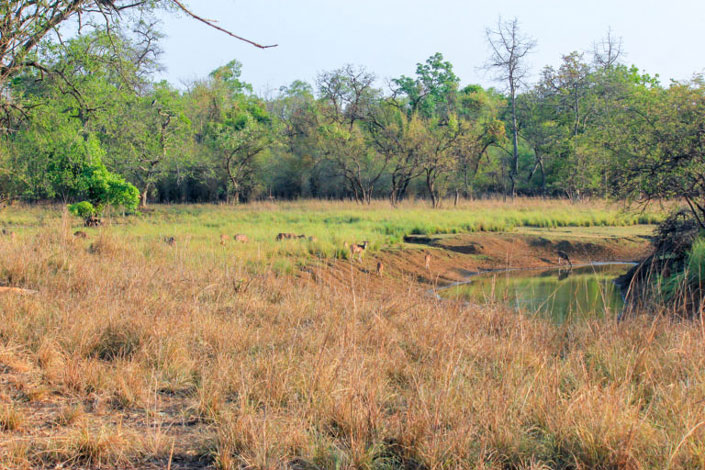Old-growth grasslands should be valued, study says

Environmental policymakers value ancient forests, but ancient, or old-growth, grasslands have not received the same recognition. That’s a mistake, according to a new Texas A&M AgriLife study.
Joseph Veldman, assistant professor in the Department of Ecology and Conservation Biology in the College of Agriculture and Life Sciences, has been working to counter the misperception that Earth’s grasslands and savannas are ecologically depauperate places that are degraded by fire and large grazing animals.
Back in 2015, Veldman led an international group of ecologists to publish a foundational paper, which argued that the concept of “old growth,” a term long applied to ancient forests, should be extended to ancient grasslands and savannas. Whereas antiquity in forests can often be seen in large trees, signs of age in old-growth grasslands are often hidden underground, in roots and buried stems, or in distinctive communities of rare or endemic plants.
Now Ashish Nerlekar, a Texas A&M doctoral student, and Veldman are bringing a new scientific study to the discussion, with their recently published article “High plant diversity and slow assembly of old-growth grasslands” in the Proceedings of the National Academy of Sciences.
“The vegetation that forms after people clear forests can superficially resemble biodiverse grasslands like the north American prairies or African savannas,” Veldman said. “Consequently, ecologists have tended to lump all grassy places together, without always recognizing the distinct values of old-growth grasslands.”
“In biology textbooks, the sections on forest succession often depict grasslands as a temporary step on the way to forest formation,” Nerlekar said. “In my home country of India, savannas are often classified by the government as ‘degraded forests’ or ‘wastelands’ leading to suppression of frequent fires to ‘conserve’ and ‘restore’ the landscape.”
They said this successional narrative has contributed to a crisis in grassland conservation.
“Around the world, disturbance-dependent grasslands are widely misclassified as degraded forests, overlooked for their conservation value, targeted for agricultural conversion, and viewed as opportunities for carbon sequestration through tree planting and fire exclusion,” Nerlekar and Veldman contend in their article.
The team analyzed data on plant diversity from grasslands and savannas around the globe. Their results show that after old-growth grasslands are destroyed, the recovery of plant diversity requires hundreds to thousands of years.

